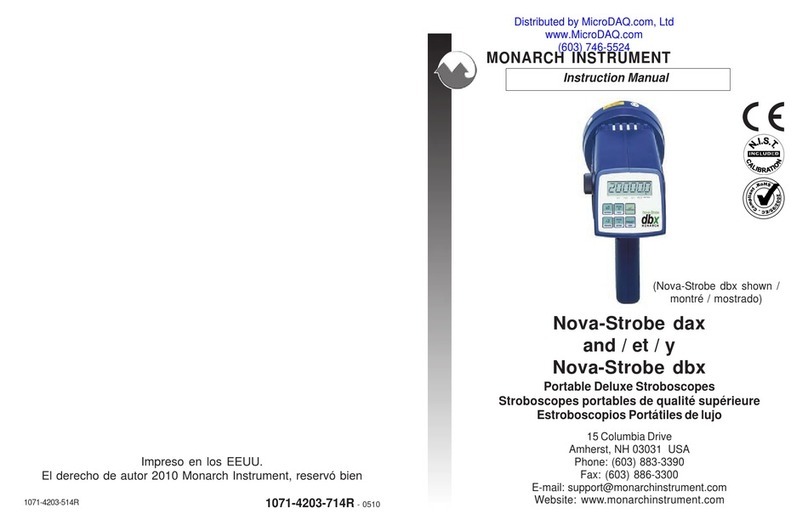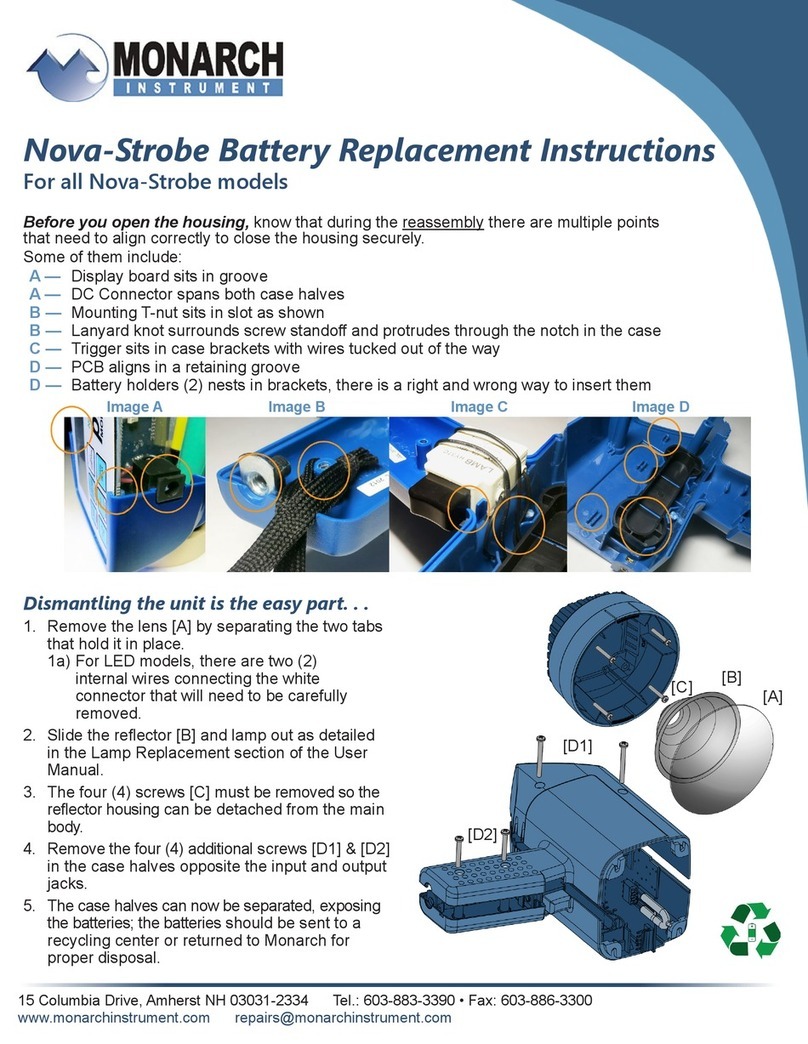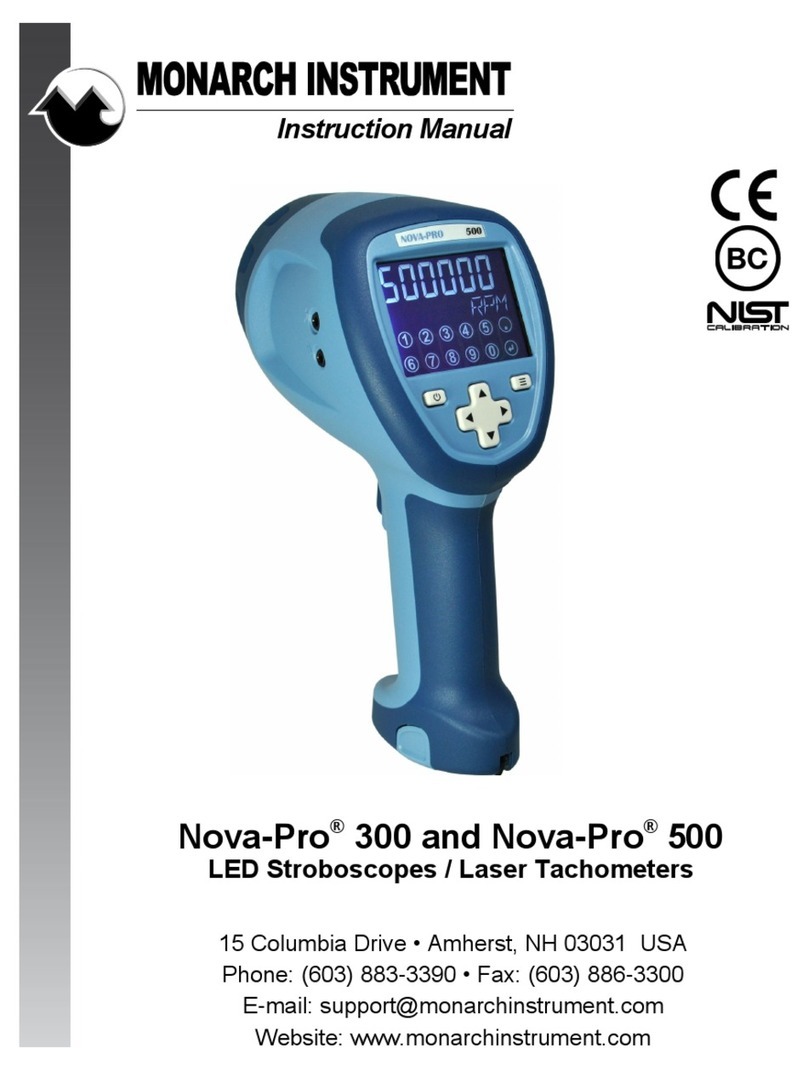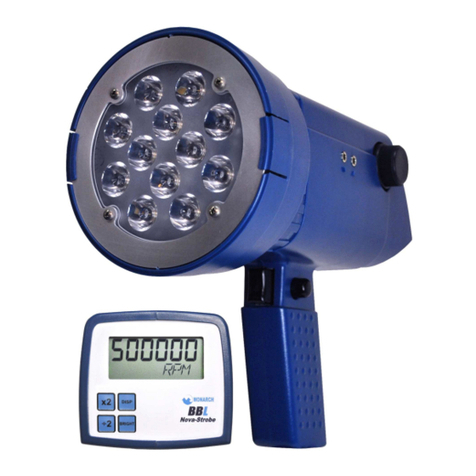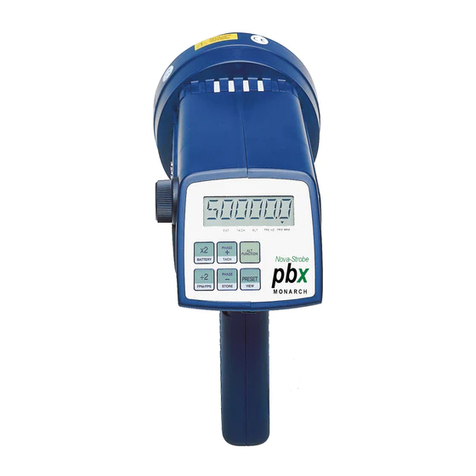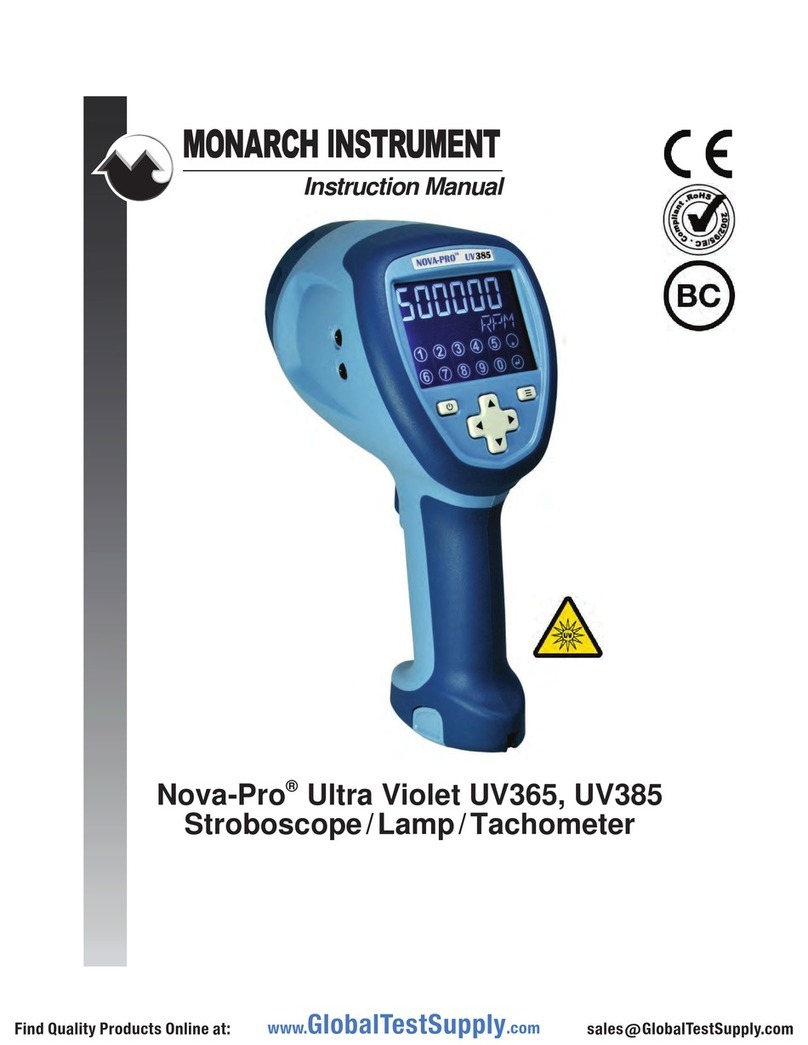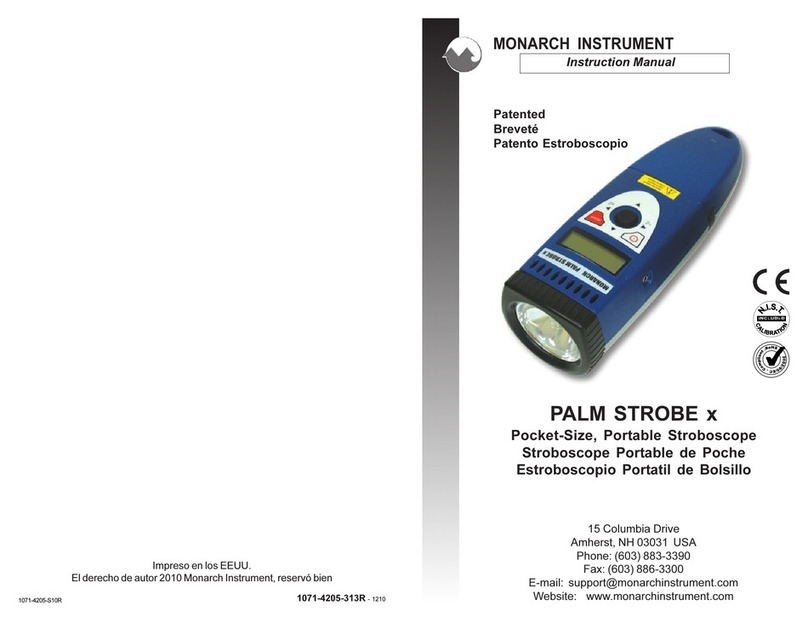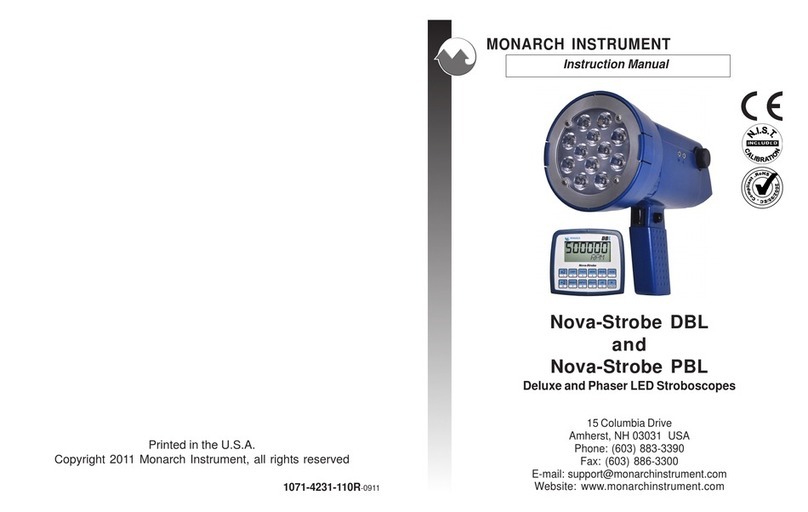
5
4.0 USING THE STROBOSCOPE TO MEASURE RPM
The primary use for a stroboscope is to stop motion for diagnostic inspection purposes. However,
the stroboscope can also be used to measure speed. In order to do this, several factors need to be
considered. First, the object being measured should be visible for all 360° of rotation (e.g. the end of
a shaft). Second, the object should have some unique part on it, like a bolt, key way or imperfection
to use as a reference point. If the object being viewed is perfectly symmetrical, then the user needs
to mark the object with a piece of tape or paint in a single location, while the object is stationary, to
be used as a reference point. Look only at the reference point.
If the speed of rotation is within the range of the stroboscope, start at the highest flash rate and adjust
the flash rate down. At some point you will stop the motion with only a single reference point of the
object in view. Note that at a flash rate twice the actual speed of the image you will see two images
(reference points). As you approach the correct speed you may see three, four or more images at
harmonics of the actual speed. The first SINGLE image you see is the true speed. To confirm the
true speed, note the reading and adjust the stroboscope to exactly half this reading, or just press the
left of the joystick button for the ÷2 function. You should again see a single image (which may be
phase shifted with respect to the first image seen).
For example, when viewing a shaft with a single key way, you will see one stationary image of the
key way at the actual speed and at 1/2,1/3,1/4, etc, of the actual speed. You will see 2 images of the
key way at 2 times the actual speed, 3 key way images at 3 times, etc. (see Figure 5). The Flash Per
Minute (FPM) equals the shaft’s Revolutions Per Minute (RPM) at the highest flash rate that
gives only one stationary image of the key way.
Figure 5 Object Rotating at 3000 RPM
If the speed is outside the full scale range of the stroboscope (12,500 FPM), it can be measured using
the method of harmonics and multipoint calculation. Start at the highest flash rate and adjust the flash
rate down. Be aware that you will encounter multiple images. Note the flash rate of the first SINGLE
image you encounter, and call this speed “A”. Continue decreasing the flash rate until you encounter
a second SINGLE image, and note this speed as “B”. Continue decreasing the speed until you reach
a third SINGLE image at speed “C”.
For a two point calculation the actual speed is given by: RPM = AB/(A-B)
For a three point calculation: RPM = 2XY(X+Y)/(X-Y)2where
X = (A-B) and
Y = (B-C)
If a Self-Powered Sensor is used to sense one pulse per revolution (External Input Mode), the readout
will display directly in RPM (FPM) without any adjustment required.
In instances when you can shut down the device and install a piece of reflective tape, then an optical
tachometer is easier to use for RPM measurement. You can use the PALM STROBE x with an
external sensor as an optical tachometer. Stroboscopes need only be used as a tachometer when
you can’t shut down the device. The human eye is not easily tricked into seeing a stopped image by
a stroboscope when the flash rate is slower than 300 FPM. Therefore, a stroboscope image is difficult
to use below 300 FPM for inspection or to measure RPM.
Stopped Image 1/4 times 1/2 times 1 time 2 times 3 times 4 times
Flash Rate (FPM) 750 1500 3000 6000 9000 12000
